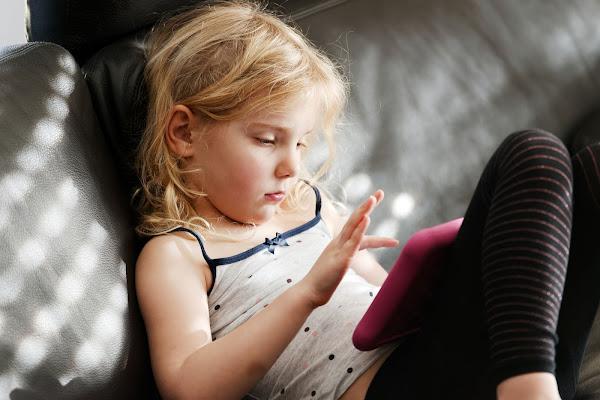This article offers valuable tips for monitoring your child’s media consumption and helping them navigate the complex world of media and develop a well-rounded and balanced lifestyle. So, read on!
1. Communicate Openly With Your Child
The first step in monitoring your child’s media consumption is to have an open and honest conversation about the types of media they engage with. Encourage them to share their interests, favorite shows, games, and websites. In turn, share your thoughts and concerns about specific content and explain why some materials may not be age-appropriate or suitable for them.
2. Introduce Child-Friendly Gadgets
Provide your child with age-appropriate and child-friendly gadgets designed to promote responsible media consumption. These devices often come with built-in parental controls and content filters, making monitoring and managing your child’s media usage easier. A great example is Jooki, a screen-free, kid-friendly music player that allows parents to control and monitor the content their children listen to. By offering your child gadgets specifically designed for their age group, you can create a safer and more controlled media environment for them.
3. Stay Informed About Emerging Trends And Technology
To effectively monitor your child’s media consumption, stay informed about new trends, apps, platforms, and potential risks. Regularly research and educate yourself on the latest digital advancements and popular content among children of your kid’s age group. Engaging in online parenting communities, subscribing to newsletters, and attending workshops can help you stay updated and make informed decisions about your child’s media consumption.
4. Create A Media Plan
Develop a family media plan that outlines the types of content your child can access, the amount of time they can spend on screens, and the activities they should engage in offline. Moreover, it helps establish clear expectations and guidelines for responsible media consumption. Be sure to review and update this plan regularly, as your child’s needs and interests may change over time.
5. Set Age-Appropriate Boundaries
Establishing clear boundaries is crucial for managing your child’s media consumption. This can be done by setting age-appropriate time limits on screen time and restricting access to certain content.’
Experts recommend no screen time for kids under 18 months, one hour per day for children aged two up to five, and consistent limits for children six years and older. It’s also essential to prioritize offline activities, such as outdoor play, social interaction, and creative pursuits, to ensure a healthy balance.
6. Be A Media Mentor Model responsible media consumption by actively participating in your child’s digital life. Watch shows and play games with them, discuss the content, and offer guidance on making informed choices. Motivate your child to think critically about the media they consume and to recognize the difference between reliable information and misinformation. By being a media mentor, not only can you foster a healthy relationship with the media but also strengthen the bond with your child.
7. Monitor Social Media Use
As your child grows older, they may become more interested in using social media platforms. While social media is a handy tool for staying connected and sharing interests, it also presents risks, such as cyberbullying, privacy concerns, and exposure to inappropriate content. Thus, regularly review your child’s social media profiles, follow their activity, and have open conversations about online safety and responsible use.
8. Balance Media Consumption With Offline Activities
Encourage your child to engage in various offline activities to develop a well-rounded and balanced lifestyle. Physical exercise, outdoor play, creative hobbies, and social interaction are all essential for your child’s overall well-being. You may establish a routine that includes a mix of both online and offline activities to ensure your child has ample opportunities for growth and development outside the digital world.
9. Create Tech-Free Zones And Times
Establishing tech-free zones, such as the dinner table, and designating specific times for device- free activities help create a healthy balance between online and offline experiences. Ensure family members participate in these tech-free periods to foster quality time and interaction.
10. Be The Example
Children often learn from observing their parents’ behavior. Demonstrating responsible media consumption yourself can set a positive example for your child to follow. Limit your own screen time, prioritize face-to-face communication, and engage in offline activities together to reinforce the importance of a balanced lifestyle.
Wrap Up
Monitoring your child’s media consumption is an essential responsibility as a parent in the digital age. By implementing these tips, you can foster a healthy relationship with media and ensure your child has a balanced and enriching experience. Remember that your involvement and guidance are key to navigating the challenges and opportunities that come with today’s media landscape.





.png)



No comments
Thank you for dropping by! I would love to hear what you thought. :)
Thanks!
♥,
Diana